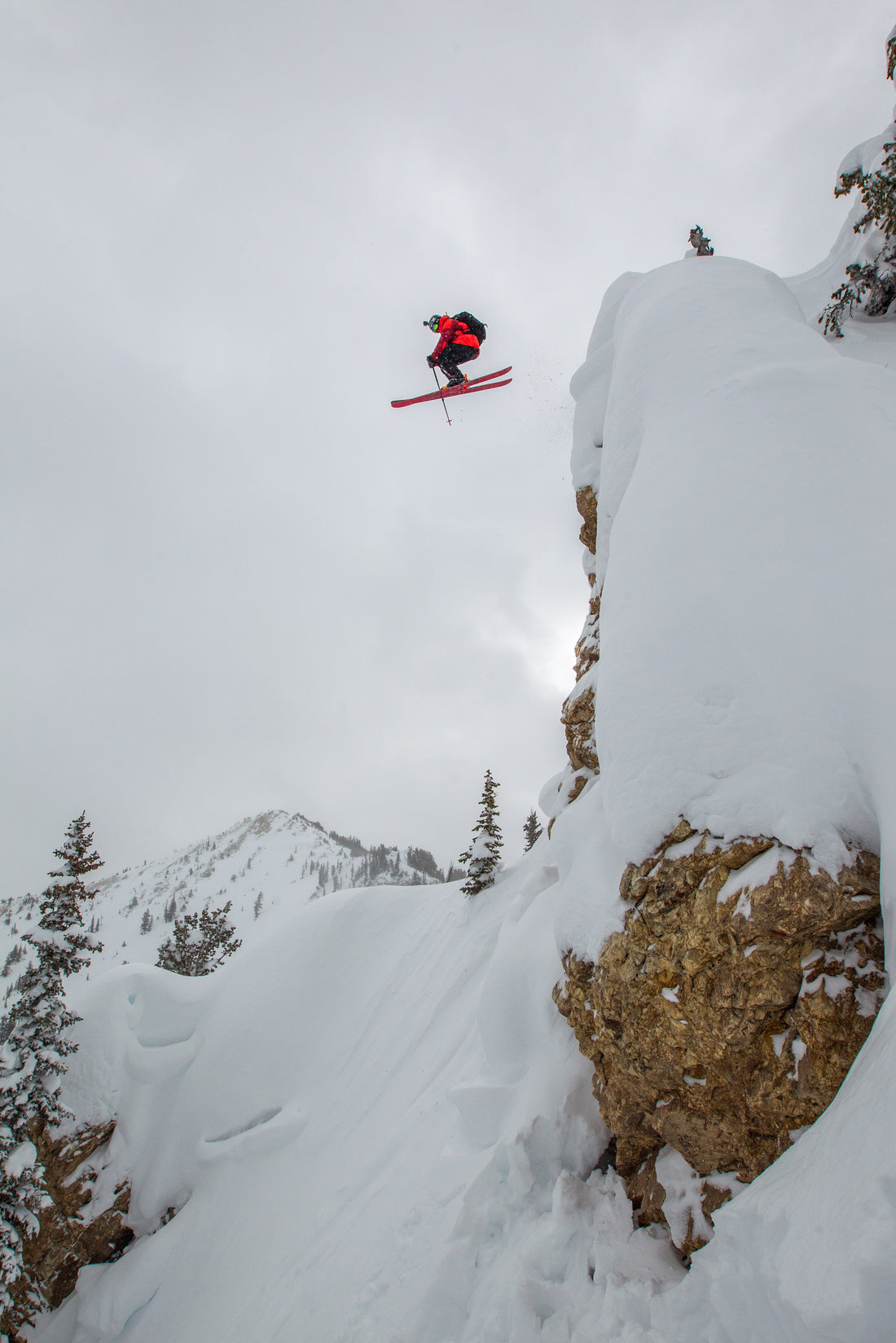Every year, as Winter comes along and the snow starts to fall, news stories begin to come out detailing the gruesome realities that individuals can face when making the decision to step out of bounds into the backcountry. It’s no secret that resort prices are rising, lift lines are growing, and somehow, I-70 is getting even more crowded. To some, the backcountry represents the solution to all of those problems.
However, there is more to making this transition than simply hiking into the untouched terrain. Tackling the backcountry safely requires training, gear, and knowledge of avalanche conditions. There is far more to backcountry adventures than meets the eye, and this blog post is here to help our community become aware of the inherent risks by mitigating them as much as possible.
First, leave the bravado at the door. In the case of Man vs Nature, Nature tends to win. No amount of strength, athleticism, and resort experience can prepare you for what the true wild has to offer. To brush aside the strength of nature is not brave, it is foolish and unnecessarily risky.
Once you acknowledge this, you can begin to delve into the process of approaching the backcountry safely. There are some crucial pieces of gear needed in order to make sure you are prepared in the event of a backcountry emergency. While it can be a substantial upfront investment, no amount of money saved is worth endangering your own life, the lives of your fellow backcountry friends, and those of emergency response personnel. Later this week we will be running a backcountry gear giveaway sponsored by SCHEELS to give you the chance to win one of three prizes ranging from $250 - $1000. Check our Instagram feed later this week for your chance to win.
Now back to the gear basics…
The basic backcountry gear includes:
- Probe
- Shovel
- Beacon
- Optional avalanche backpack
Having these items will help mitigate risk in the event of an emergency, however, it is always better to avoid placing yourself in a precarious situation in the first place. This requires a backcountry education and constant monitoring of avalanche conditions.
Free resources which can help with this learning process include:
- Clicking Here for Know Before You Go, a free avalanche introductory course with excellent information.
- Following accounts with detailed information:
- @coavalancheinfo
- @friendsofcaic
- Paid: When you’re looking and ready for a more intensive certification, Friends of CAIC has a great level one certification course to get you started. Click Here
If that isn’t enough to convince you, take it from Julian Carr. (IG @juliancarr) You’d be hard-pressed to find someone with more first-hand backcountry experiences than Julian. He is a backcountry extraordinaire, with experience sending 200+ foot cliffs for fun and living to tell the tale. We’ve asked him some key questions, which begin to detail just how serious he is about backcountry safety, and how even as an expert, precarious situations can arise.
Let’s jump into the Q&A!
Favorite experience in the backcountry?
I believe every day in the backcountry should be preceded by proper training. Knowledge helps you move through the mountains with confidence. Enabling "favorite" days. If you don't have adequate knowledge, having a good day is impossible - you're a liability to yourself & others in your vicinity.
Least favorite experience or a close call you may have had?
Every time I hit a cliff in the backcountry (or inbounds for that matter), I always have a spotter that skis directly to me upon landing. Three times in my career I was buried in my own bomb hole incapable of digging myself out, similar to being buried in an avalanche, it's very scary. If you intend to take air in the backcountry, be sure to have a spotter.
What’s the most important piece of advice to know about the backcountry?
Be patient & diminish your expectations, you can script best-case scenarios, but don't force them if it's obvious you need to back off.
What’s your go-to safety checklist before venturing out into the backcountry?
My biggest checklist item is choosing competent backcountry partners, you're only as safe as your least experienced person in the group.
Let's recap...
No two days are the same in the backcountry. As Julian mentioned, although there are a minimum of recommended safety checklist items, you can and should implement more. Having a spotter, knowing your limits, and having an experienced group of individuals with you is vital. And of course proper gear is a must. We thank Julian for the time and can’t wait to see where his career and passion take him next.
Lastly, in order to support your backcountry dream and gear wish list we’ve teamed up with the Colorado SCHEELS stores to provide you with a chance to win one of three prizes!
1st place: $1000 SCHEELS Gift Card
2nd place: $500 SCHEELS Gift Card
3rd place: $250 SCHEELS Gift Card
Whether you need a new probe, shovel, beacon, or avalanche pack, our local Colorado SCHEELS stores are giving the I-70 Things Community the chance to win big! Check out the I-70 Things feed on Instagram for the giveaway later this week!
Follow Julian Carr on social:
Instagrams: @juliancarr, @cirqueseries, @blake.bronco
Websites: juliancarr.com, cirqueseries.com, blakebroncos.com
–
Disclaimer: Reading this blog post does not substitute taking a course and becoming certified. This is not an all-inclusive list. In order to be safe and successful in the backcountry, one must have a full and in-depth understanding of conditions, be precautious, have the gear, and a certification. Reading this article is not enough. You can never be too cautious.

